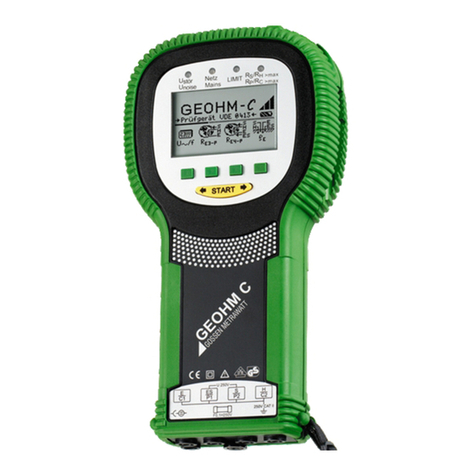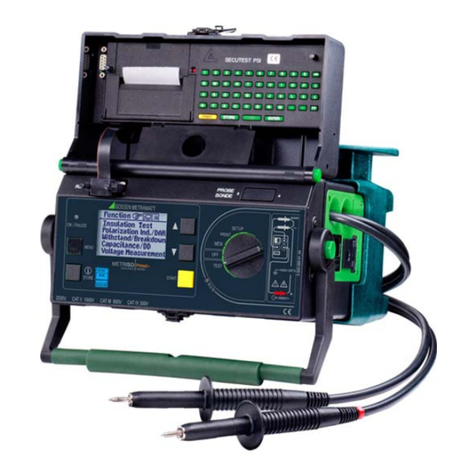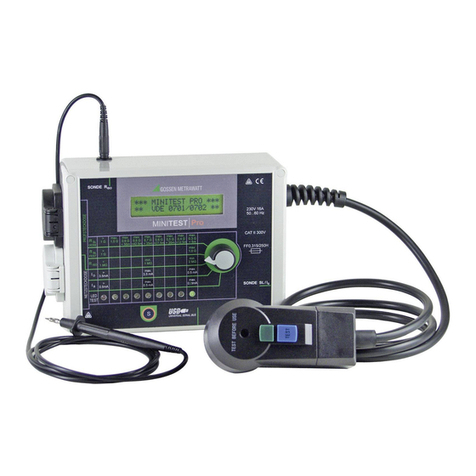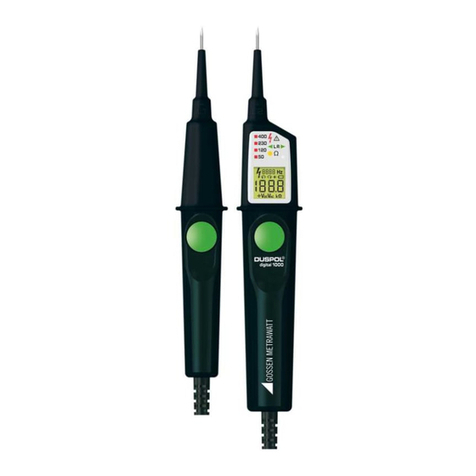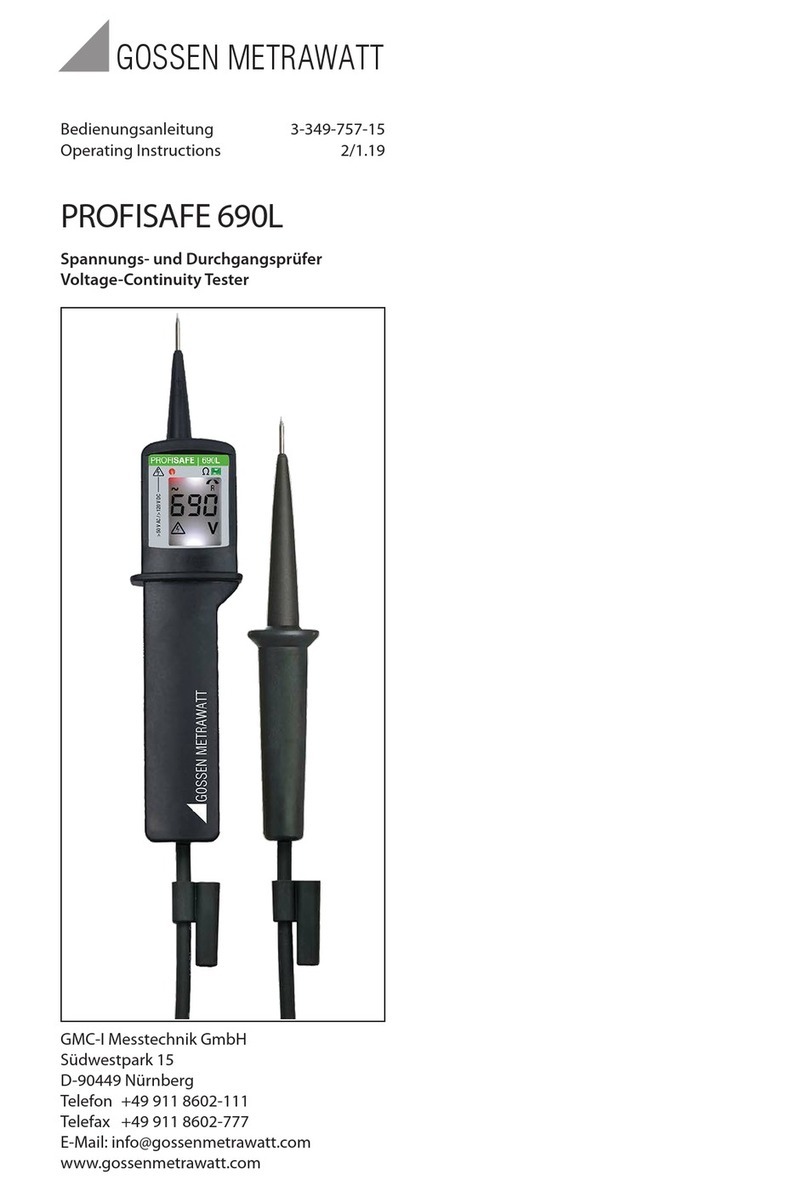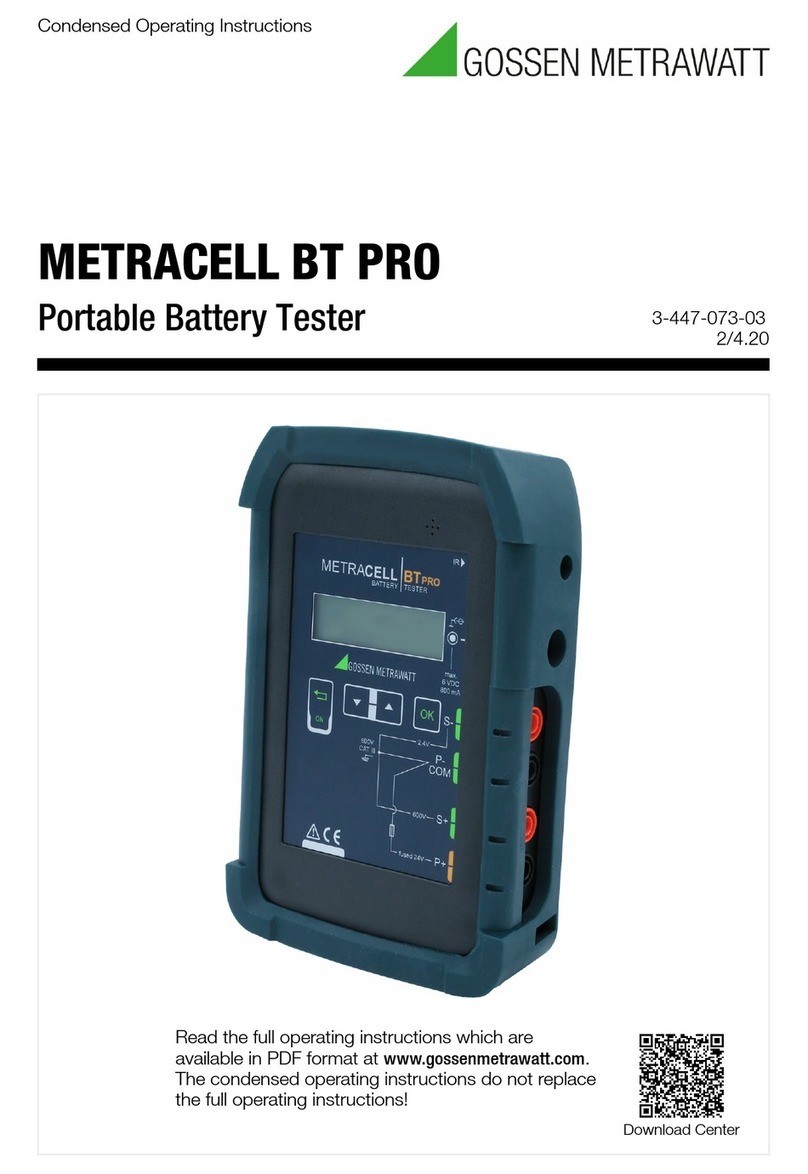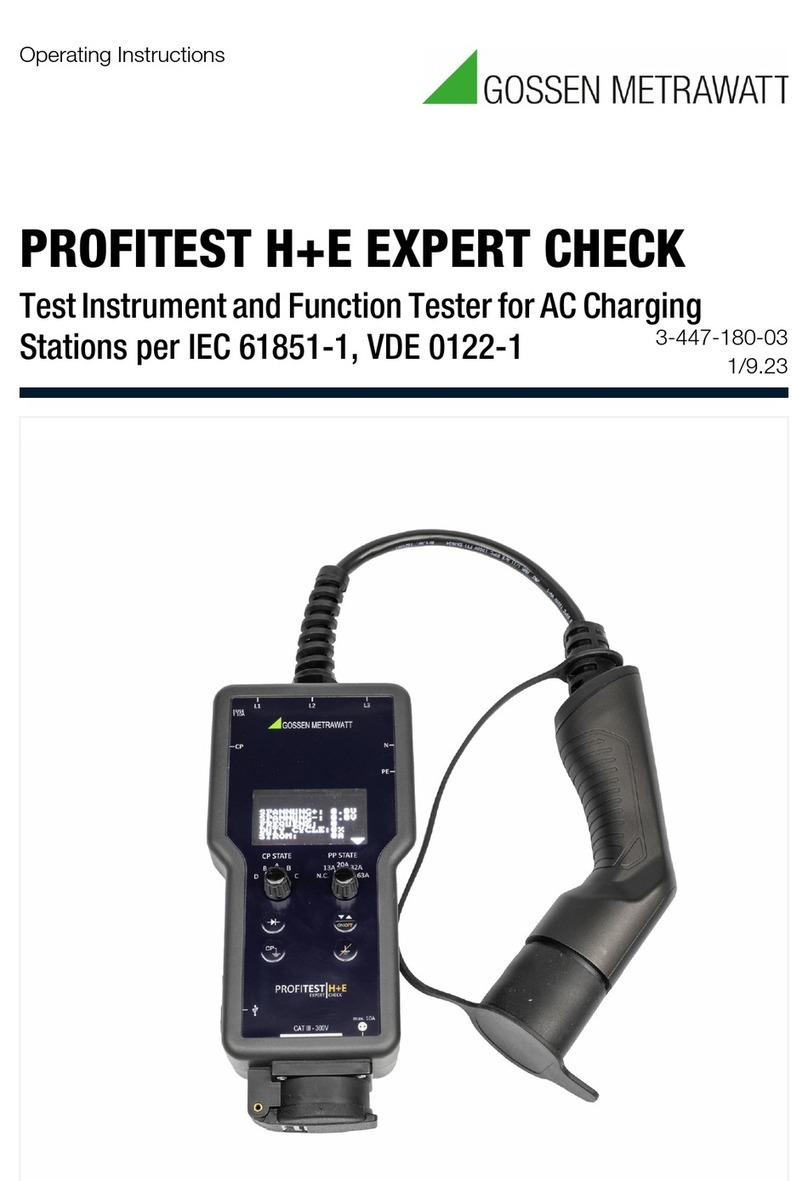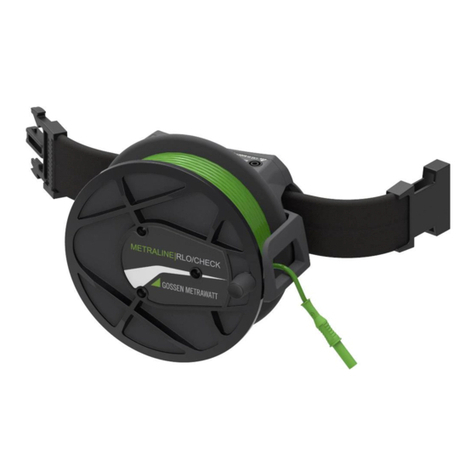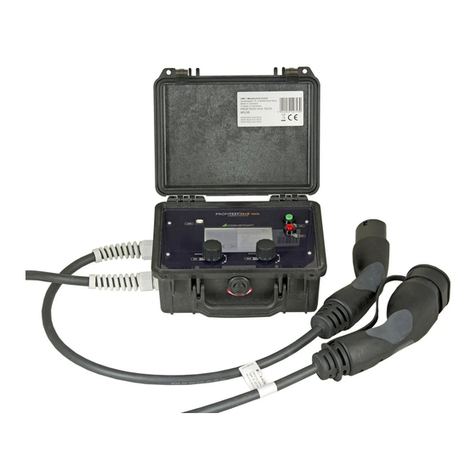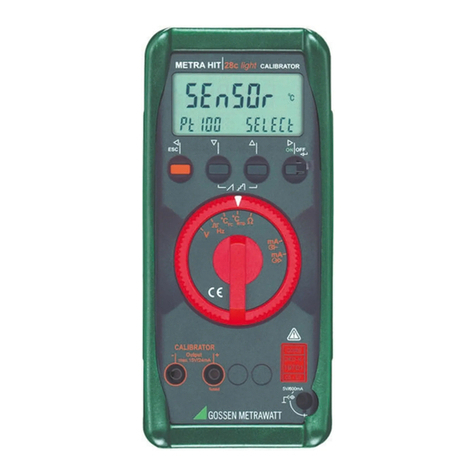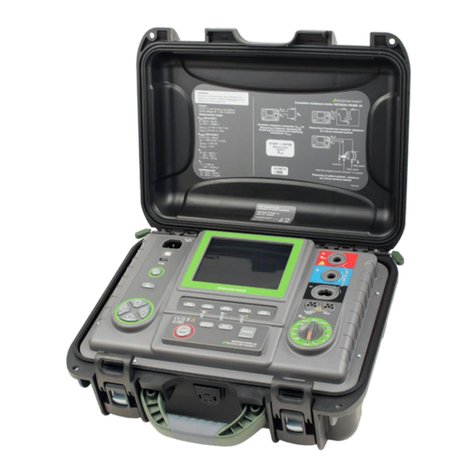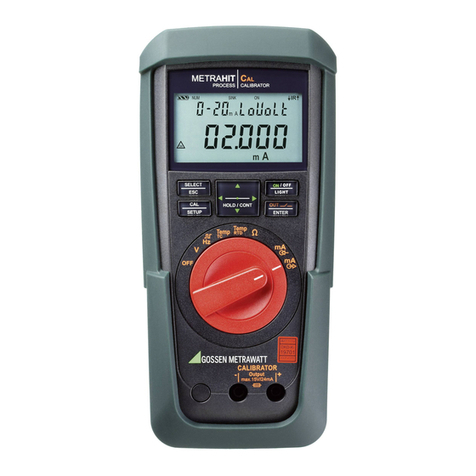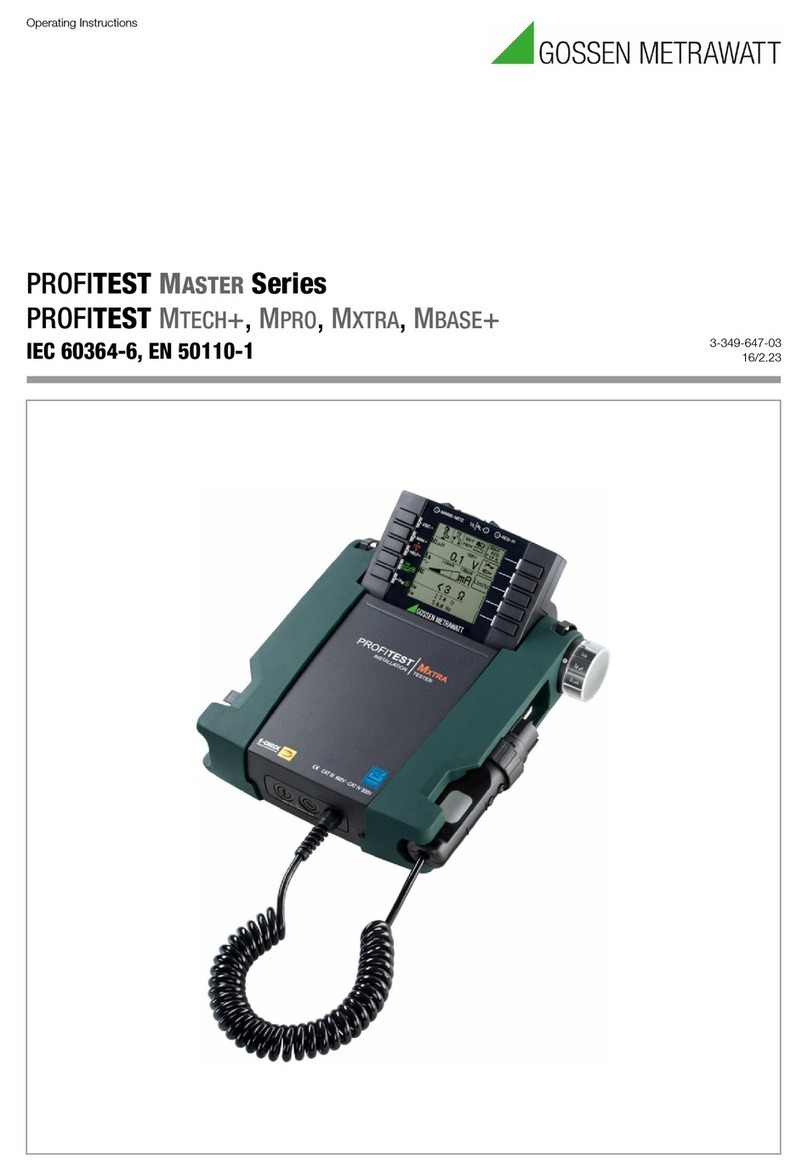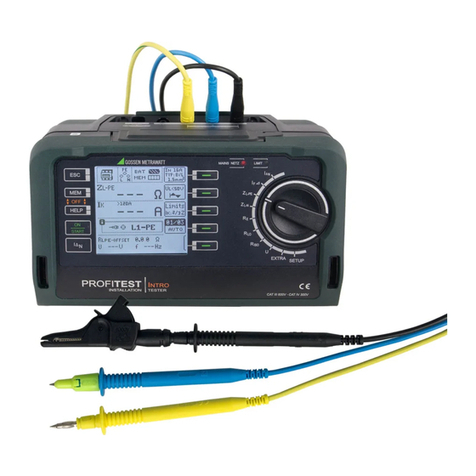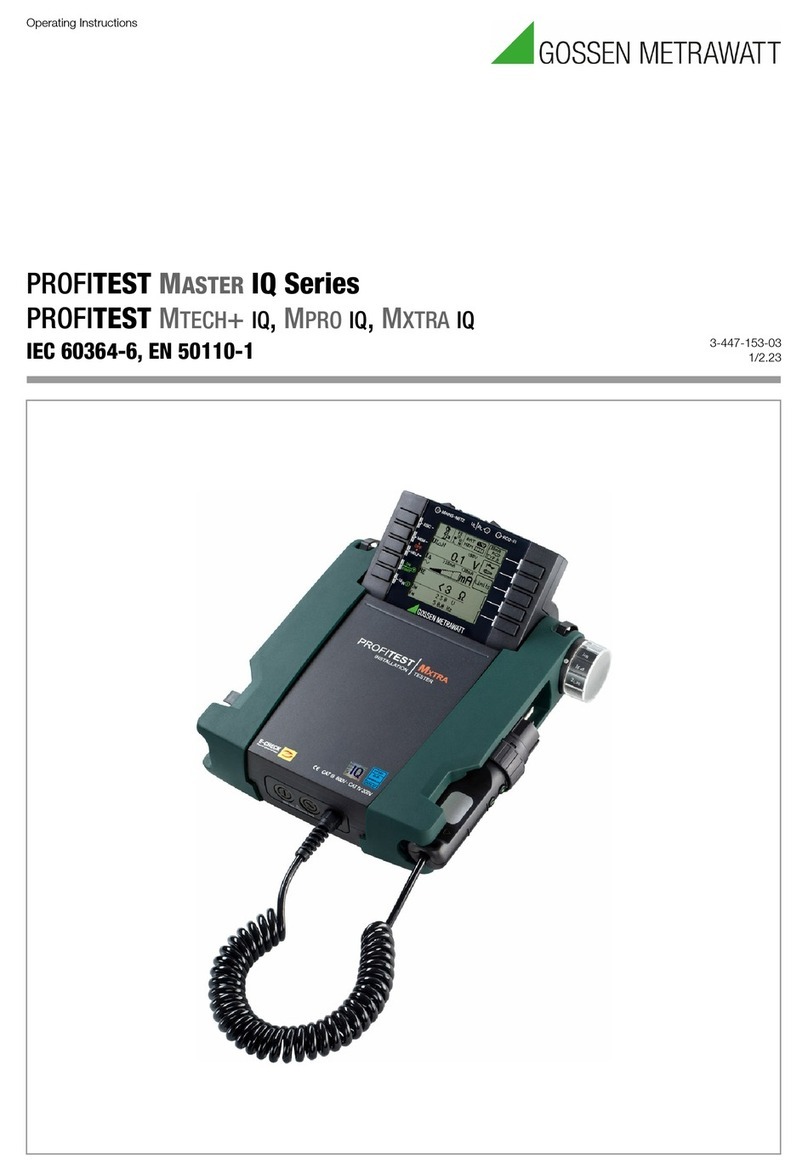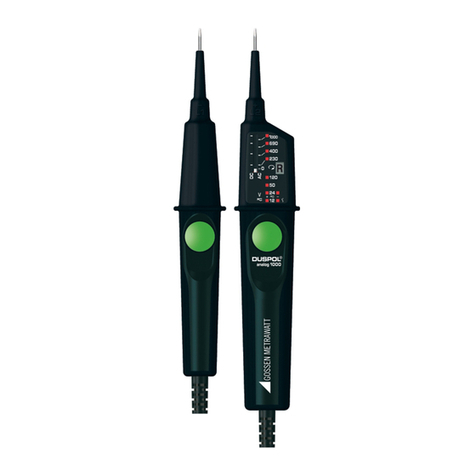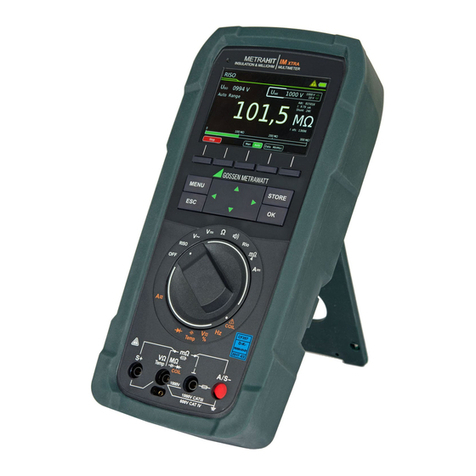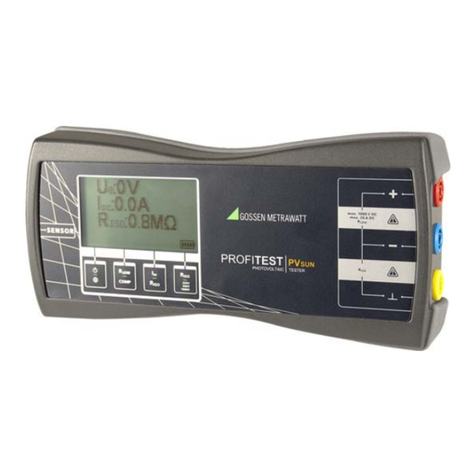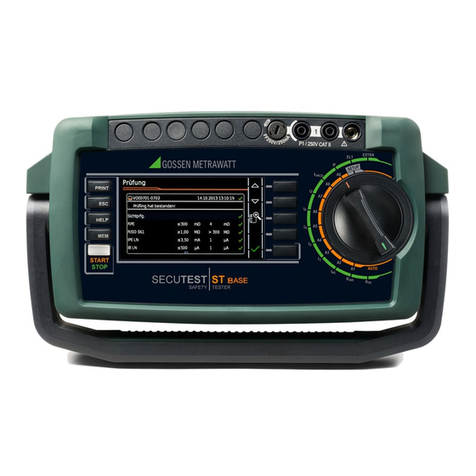
4GMC-I Messtechnik GmbH
Table of Contents Page Page
1 Scope of delivery: ............................................................ 5
2 Applications ..................................................................... 5
2.1 Using Cable Sets and Test Probes ...............................................5
2.2 Overview of Features Included
with PROFITEST MASTER Device Variants ...................................6
3 Safety Features and Precautions ..................................... 6
4 Initial Start-Up .................................................................. 7
4.1 Installing or Replacing Batteries .................................................7
4.2 Switching the Instrument On/Off .................................................7
4.3 Battery Test .................................................................................7
4.4 Charging the Batteries in the Tester ...........................................7
4.5 Device Settings ...........................................................................8
5 General Notes ................................................................ 12
5.1 Connecting the Instrument ........................................................12
5.2 Automatic Settings, Monitoring and Shut-Off ...........................12
5.3 Measurement Value Display and Memory .................................13
5.4 Testing Earthing Contact Sockets for Correct Connection ........13
5.5 Help Function ............................................................................13
5.6 Setting Parameters or Limit Values using RCD Measurement
as an Example ...........................................................................14
5.7 Freely Selectable Parameter Settings or Limit Values ..............15
5.8 2-Pole Measurement with Fast or Semiautomatic Polarity
Reversal ....................................................................................15
6 Measuring Voltage and Frequency ................................ 16
6.1 Single-Phase Measurement ......................................................16
6.1.1 Voltage Between L and N (UL-N),
L and PE
(UL-PE) a
nd N and PE
(UN-PE)
with Country-Specific Plug Insert, e.g. SCHUKO .............................16
6.1.2 Voltage between L – PE, N – PE and L – L
with 2-Pole Adapter Connection ...................................................16
6.2 3-Phase Measurement (line-to-line voltage) and Phase Sequence 17
7
Testing RCDs .......................................................................17
7.1 Measuring Contact Voltage (with reference to nominal residual
current) with 1/3 Nominal Residual Current and Tripping Test with
Nominal Residual Current .........................................................18
7.2
Special Testing for Systems and RCCBs .........................................20
7.2.1 Testing Systems and RCCBs with Rising Residual Current (AC)
for Type A, AC and B RCDs ..........................................................20
7.2.2 Testing Systems and RCCBs
with Rising Residual Current (AC) for Type B RCDs .........................20
7.2.3 Testing RCCBS with 5 IN ........................................................21
7.2.4 Testing of RCCBs which are Suited for
Pulsating DC Residual Current ......................................................21
7.3 Testing for Special RCDs ...........................................................22
7.3.1 System, Type RCD-S Selective RCCBs ..........................................22
7.3.2 PRCDs with Non-Linear Type PRCD-K Elements ............................22
7.3.3 SRCD, PRCD-S (SCHUKOMAT, SIDOS or comparable) ....................23
7.3.4 Type G or R RCCB .......................................................................24
7.4 Testing Residual Current Circuit Breakers in TN-S Systems .....25
7.5 Testing of RCD Protection in IT Systems with High Cable
Capacitance (e.g. in Norway) ....................................................25
8 Testing of Breaking Requirements
Overcurrent Protective Devices,
Measurement of Loop Impedance and Determination of
Short-Circuit Current (functions ZL-PE and IK) ............... 26
8.1 Measurements with Suppression of RCD Tripping ....................27
8.1.1 Measurement with Positive Half-Waves (PROFITEST MXTRA only) ..27
8.2 Evaluation of Measured Values .................................................28
9 Measuring Line Impedance (ZL-N function) ................... 28
10 Earthing Resistance Measurement (REfunction) ........... 30
10.1 Earthing Resistance Measurement – Mains Operated ..............31
10.2 Earthing Resistance Measurement – Battery Powered ............31
10.3 Earthing Resistance, Mains Powered – 2-Pole Measurement with 2-
Pole Adapter or Country-Specific Plug (Schuko) without Probe ... 32
10.4 Earthing Resistance Measurement, Mains Powered –
3-Pole Measurement: 2-Pole Adapter with Probe ....................33
10.5 Earthing Resistance Measurement, Mains Powered –
Measurement of Earth Electrode Voltage (UEfunction) ...........34
10.6 Earthing Resistance Measurement, Mains Powered –
Selective Earthing Resistance Measurement with Current
Clamp Sensor as Accessory ......................................................35
10.7 Earthing Resistance Measurement, Battery Operated – 3-Pole 37
10.8 Earthing Resistance Measurement, Battery Operated – 4-Pole 38
10.9 Earthing Resistance Measurement, Battery Operated –
Selective (4-pole) with Current Clamp Sensor and PRO-RE
Measuring Adapter as Accessory ..............................................40
10.10 Earthing Resistance Measurement, Battery Powered –
Ground Loop Measurement (with current clamp sensor and
transformer, plus PRO-RE/2 measuring adapter as accessory) 41
10.11 Earthing Resistance Measurement, Battery Powered
– Measurement of Soil Resistivity E ...........................................42
11
Measuring Insulation Resistance ........................................ 44
11.1 General ......................................................................................44
11.2 Special Case: Earth Leakage Resistance (REISO) .....................46
12 Measuring Low-Value Resistance up to 100 Ohm
(protective conductor and equipotential bonding conductor) ...47
13 Measurement with Accessory Sensors .......................... 49
13.1 Current Measurement with Current Clamp Sensor ...................49
14
Special Function – EXTRA Switch Position ...............................50
14.1 Voltage Drop Measurement (at ZLN) – U Function .................51
14.2 Measuring the Impedance of Insulating Floors and Walls
(standing surface insulation impedance) – ZST Function .........52
14.3 Testing Meter Start-Up with Earthing Contact Plug
– kWh Function .........................................................................53
14.4 Leakage Current Measurement with PRO-AB Leakage Current
Adapter as Accessory– IL Function (PROFITEST MXTRA only) ...54
14.5 Testing of Insulation Monitoring Devices – IMD Function .........55
14.6
Residual Voltage Test – Ures Function (
PROFITEST MXTRA
only) ...... 57
14.7
Intelligent Ramp – ta+ID Function (
PROFITEST MXTRA
only) ........ 58
14.7.1 Applications ................................................................................58
14.8 Testing Residual Current Monitors
– RCM Function (PROFITEST MXTRA only) .................................59
15 Automatic Test Sequences – AUTO Function ................. 60
16 Database ........................................................................ 62
16.1 Creating Distributor Structures, General ...................................62
16.2 Transferring Distributor Structures ...........................................62
16.3 Creating a Distributor Structure in the Test Instrument ............62
16.3.1 Creating Structures (example for electrical circuit) .........................63
16.3.2 Searching for Structural Elements .................................................64
16.4 Saving Data and Generating Reports ........................................65
16.4.1 Use of Barcode Scanners and RFID Readers ..................................66
17 Operating and Display Elements .................................... 67
18 LED Indications, Mains Connections and Potential
Differences ..................................................................... 69

